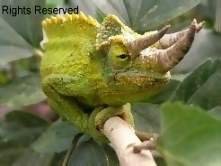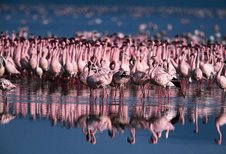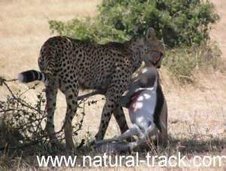The Rare and Gorgeous Rothschild giraffe has joined the ‘red list’ of
the endangered species in the world. Driven from its wide-ranging West
African habitats, the Rothschild giraffe is evidently in peril but now,
its plight has been officially recognized thanks to great conservation
dedication, efforts, and research. The world’s largest environment
network, the International Union for Conservation of Nature, has added
it to its red list of endangered species.
Attaining a height of nearly 20ft when fully grown, the Rothschild’s
are the tallest giraffe species. This therefore qualifies them as the
tallest mammals in the entire world! It is also the only giraffe species
without patches on its legs. In fact, its legs are white from the knees
to the feet and its looks as if it is wearing white stockings. Its
other peculiar feature is that of having five ‘horns’ instead of two.
Named after the banker and zoologist Walter Rothschild who first
described it, the species joins the West African giraffe on the list,
making it the second most threatened of the nine giraffe sub-species.
While giraffes overall are ranked of “least concern” by the IUCN, partly
due to a lack of data, there are far fewer Rothschild giraffes
remaining than there are endangered African elephants. Conservationists
say farming developments are largely to blame for the animal’s decline.
Giraffes are browsing animals which use their huge necks and
prehensile tongues to strip the leaves and bark from trees on the
African savannah. They also graze and have a series of special valves
and a complicated network of elastic blood vessels in the neck, not only
to prevent the animal from passing out when it bends down to drink or
graze, but also to ensure that the blood is successfully pumped along
its long neck to the brain.
Despite their great height and gangly appearance the giraffe is one
of the fastest species of animal, reaching top speeds of 35mph (56km/h)
when running over open ground. For longer distances, the giraffe can
lope along at about 10mph (16km/h). They have one of the longest and
most mobile tongues reaching an average length of 45.6cm and their coat
patterns are as unique as human fingerprint.
Fewer than 670 Rothschild giraffes now live in the wild, in isolated
populations. Some 40% live in national parks and private land in Kenya
and the remaining 60% in Uganda. Isolation of the species’ remaining
populations and a lack of understanding about how it lives and feeds are
hampering efforts to restore its numbers.
There are very few locations where the Rothschild Giraffe can be seen
in the wild, with notable spots being Lake Nakuru National Park in
Kenya and Murchison Falls National Park in Northern Uganda. There are
various captive breeding programmes in place—most notably at The Giraffe
Centre in Nairobi, Kenya, and at Woburn Safari Park in Bedfordshire,
England—which aim to expand the genetic gene-pool in the wild population
of the Rothschild Giraffe.
While giraffes in general are classified as Lower Risk: Conservation
Dependent, the Rothschild Giraffe is at particular risk of
hybridization, as the population is so limited in numbers. Its current
classification is highly hoped to highlight to the world the critical
state its tallest creature is in.
Lets join hand and save the world’s only wildlife tower
PKP. safaris in kenya desk
Subscribe to:
Post Comments (Atom)









No comments:
Post a Comment